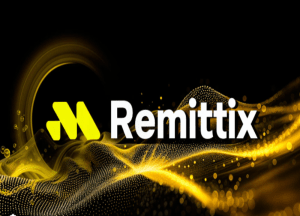What Is Impermanent Loss and How to Reduce Its Impact?
Is the risk of impermanent loss worth the potential returns?
Decentralized finance (DeFi) has introduced new passive income-generating opportunities in the form of liquidity mining and yield farming. However, it remains to be seen if these provide better returns in the long run than the traditional buy and hold strategy, where your capitals remain idle but may appreciate in value someday.
The DeFi sector caused a revolution in the crypto space, with the so-called “DeFi Summer ” in mid-2020 launched by Compound’s incredible COMP token run. This summer of DeFi unlocked insane APY gains for DeFi degens, who wielded their crypto assets without fear in order to chase the highest yield in the form of staking and liquidity mining incentives.
While many were successful and made returns that registered in the thousands of percentages, those that arrived late at the party were welcomed to inevitable rug pulls, hacks and other costly exploitations.
While APYs have come down to earth, DeFi is still on a tear in 2022, having seen a healthy revival since a brief decline in 2021. Yet one market-related issue is still causing investors a lot of pain.
Savvy investors can deposit their assets into liquidity pools hosted on DeFi exchanges to earn yield. However, these investors — also called liquidity providers — will then sometimes experience “impermanent loss,” arguably the biggest drawback to DeFi other than hacks and rug pulls.
This guide will explain how impermanent loss happens, what it really means and what it would actually require to avoid this from happening.
How Does DeFi Platform Works?
Before going into the specifics of impermanent loss, it is important to first understand how exchanges, liquidity pools, automated market makers (AMMs) and other important components work together.
Unlike custodial exchanges which bear the cost of providing liquidity for traders, decentralized exchanges (DEXs) rely on aggregated funds — referred to as liquidity pools — to facilitate trades.
Liquidity pools come in pairs of tradeable cryptocurrency assets, such as ETH-USDT, ETH-BUS, and ETH-DAI on decentralized exchanges (DEXs). They are designed to hold an equal value of their trading pairs, so if you deposit $200 worth of ETH in a pool, you will also need to deposit $200 worth of its asset pair to be a liquidity provider.
Automated Market Makers
Trades on DEXs are facilitated by automated market makers, which are tools that enable the automatic trading of cryptocurrencies in a permissionless manner, utilizing liquidity pools instead of market makers and takers in a traditional order book setup. You can think of them as a trading engine for DEXs.
While AMM users provide liquidity to the pools, the prices of the cryptos are actually set by a mathematical formula, which may vary depending on the AMM.
Liquidity Mining
The concept of liquidity mining exists because AMMs need to incentivize users to deposit liquidity into pools so others can trade. Therefore, network users that deposit assets into a liquidity pool are proportionally rewarded based on the value of their deposits.
Rewards can also include liquidity provider tokens (LP tokens), which can be re-staked for more rewards and can serve as proof that a user has provided liquidity to a pool.
Liquidity mining is normally a win-win situation for all DeFi participants, since traders get to enjoy sufficient liquidity, while liquidity providers earn yield from their deposits. However, liquidity mining does not come without risk.
One of the biggest perils of liquidity mining are DeFi exploits that can drain your funds. For further reading, check out our flash loan attacks article.
When will Impermanent Loss Occur?
Impermanent loss occurs when the total worth of all cryptocurrency holdings deposited by a liquidity provider into a pool starts to differ from the total worth when first deposited.
To illustrate this better, here’s an example.
Let’s say you deposit an equal amount of ETH and USDT to an ETH-USDT liquidity pool.
The value of the pair must be balanced as required by the system, since this secures accurate pricing. Remember, DeFi exchanges don’t rely on external markets setting the price for token valuation.
Now, let’s say the price of ETH goes up on other exchanges. A particular type of trader, whom we’ll call an “arbitrageur,” will see this as an opportunity for a quick profit.
Several arbitrageurs will then purchase cheap ETH from the DEX and sell it on other exchanges at a higher price.
The more arbitrageurs purchase ETH from the ETH-USDT liquidity pool, the higher its price becomes. But the arbitrageurs will repeat the process of buying cheap ETH from the pool, supplying it with more USDT and then selling the ETH on other exchanges until the price balances.
In this scenario, the profits that the arbitrageurs make come at the expense of the liquidity providers, who technically own less ETH now compared to their initial deposit.
Is Impermanent Loss Considered a Really Loss?
There is no right answer here, as it would depend on how you look at it. Technically, even if you do happen to undergo impermanent loss, you should still be net positive with some profits coming from the LP rewards and transaction fees.
The “loss” that is referred to is actually your potential earnings had you just taken a HODL approach to your crypto instead.
For instance, let’s say Bob has deposited 1 ETH and 5,000 of a hypothetical token called EBOB (assuming 1 ETH = 1 EBOB at the time of deposit). In addition, let’s say the pool has a total of 10 ETH and 50,000 EBOB, with Bob owning a 10% share of the pool worth $10,000.
What if the price of ETH doubles to 10,000 EBOB in a month? Arbitrageurs will do their thing, and Bob will end up with the same $10,000 that he initially deposited in the pool, only this time it’s now 0.5 ETH and 5,000 EBOB due to the change in the price of ETH.
If Bob withdrew his funds, he would have made some money thanks to the liquidity rewards. But what if he just held on to his 1 ETH and 5,000 EBOB instead of liquidity mining? It would have grown to $10,055, a 50% profit in a month, which is very unlikely to happen with liquidity mining rewards.
Would you consider this a loss? The answer would be subjective, and it would depend on a person’s tolerance for risk.
How to Decrease or Minimize Impermanent Loss
Earning passive rewards from trading commission fees can look like a surefire way to make your money work for you. However, impermanent loss is a possible outcome for which you should be prepared.
Listed below are a few ways you might be able to work around impermanent loss.
Watch out for Moves
If you don’t have a feel for how the market works or how impermanent loss can impact your plans, start with small amounts first. It is extremely important to engage in liquidity mining with the same caution as any other cryptocurrency trading strategy. It all comes down to performing your due diligence.
Note that impermanent loss is less frequent in a market that moves sideways.
Opt for Stablecoin Asset Pools
If your risk tolerance is not very high, you may opt for stablecoin pairs like DAI-USDT TUSD-DAI, and UST-USDC in order to avoid impermanent loss altogether. These coins are all pegged to the U.S. dollar, so they won’t fluctuate quite like other crypto assets.
However, you should accept that less risk equals fewer rewards, and you probably won’t earn crazy amounts compared to high-risk pools.
Consider One-Sided Asset Pools
As mentioned in our previous example, rebalancing within an exchange’s liquidity contributes to impermanent loss. When selecting a pool for liquidity mining, consider one-sided asset pools, which are those that only require one token. An example of this is the “Bread” pool in BakerySwap. Again, since there is little risk involved here, the rewards are not as high.
Choose Uneven Liquidity Pools
Platforms such as Bancor and Balancer offer flexible pools that don’t require a 50/50 token ratio in order to finalize the accurate price of a supported asset. Some of them offer ratios like 80/20, 60/40 or other variations.
For instance, an 80/20 LINK/ETH pool would cushion liquidity providers against a rapid climb of LINK given that they are mostly exposed to LINK (80% of the pool). However, if ETH rises dramatically against LINK, then the impermanent loss will be greater. Nevertheless, that is unlikely to happen for longer periods, since ETH’s market cap is orders of magnitude higher than LINK already.
While these ratios can potentially water down the effects of impermanent loss, they can also backfire and cause major losses.
Is Liquidity Mining Worth It Despite the Risk of Impermanent Loss?
The cryptocurrency market has always been more chaotic than traditional markets, with its insane volatility contributing to the risk of impermanent loss. However, this doesn’t mean that liquidity mining is not a worthy and potentially lucrative endeavor, as many investors are more likely to make substantial passive income in this way. You just need to perform due diligence and plan well as with any investment.
Plan your financial decisions according to your risk appetite. While there is some disagreement about the importance of impermanent loss, it is a phenomenon worth noting as you allocate your portfolio.









